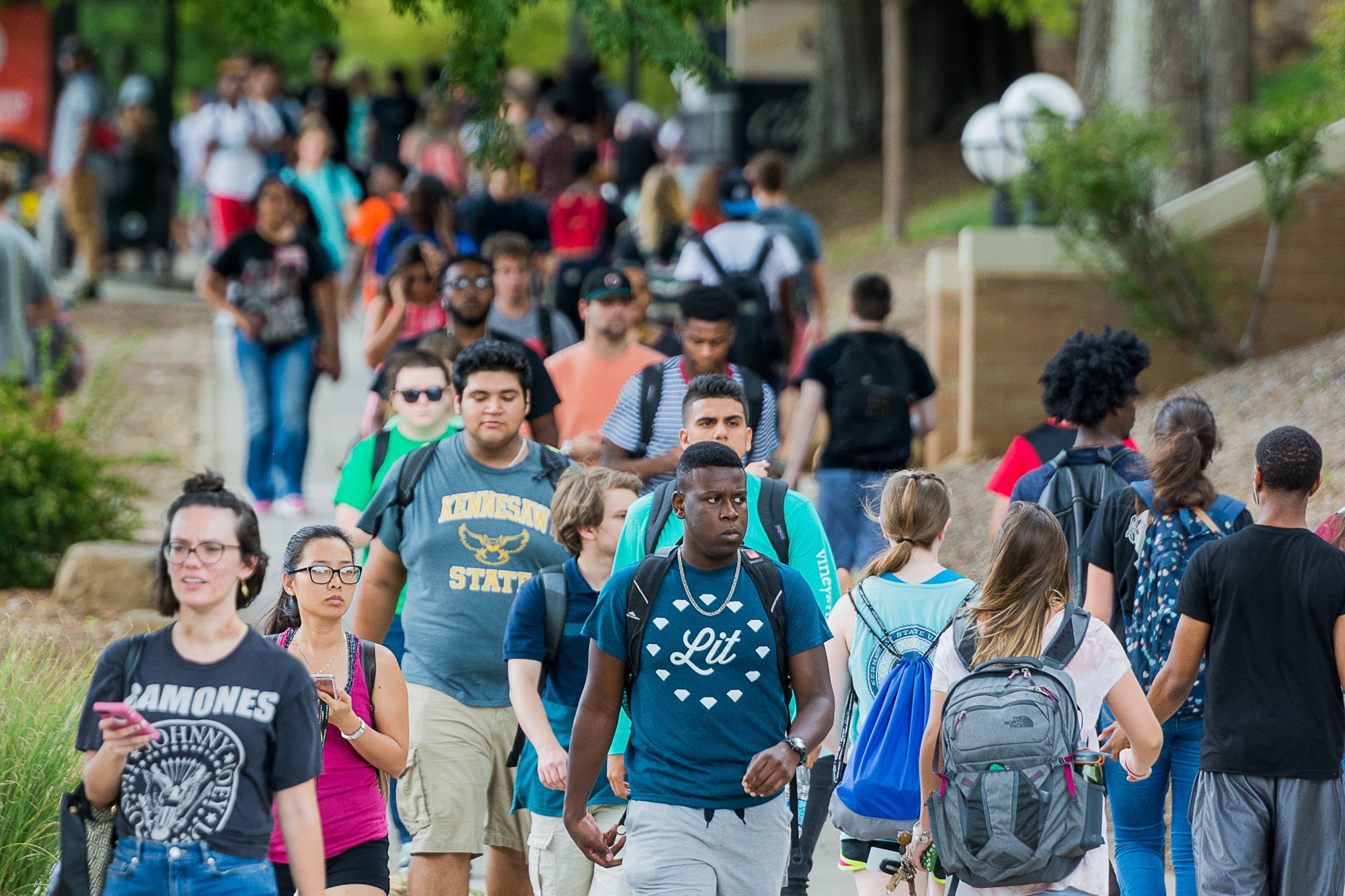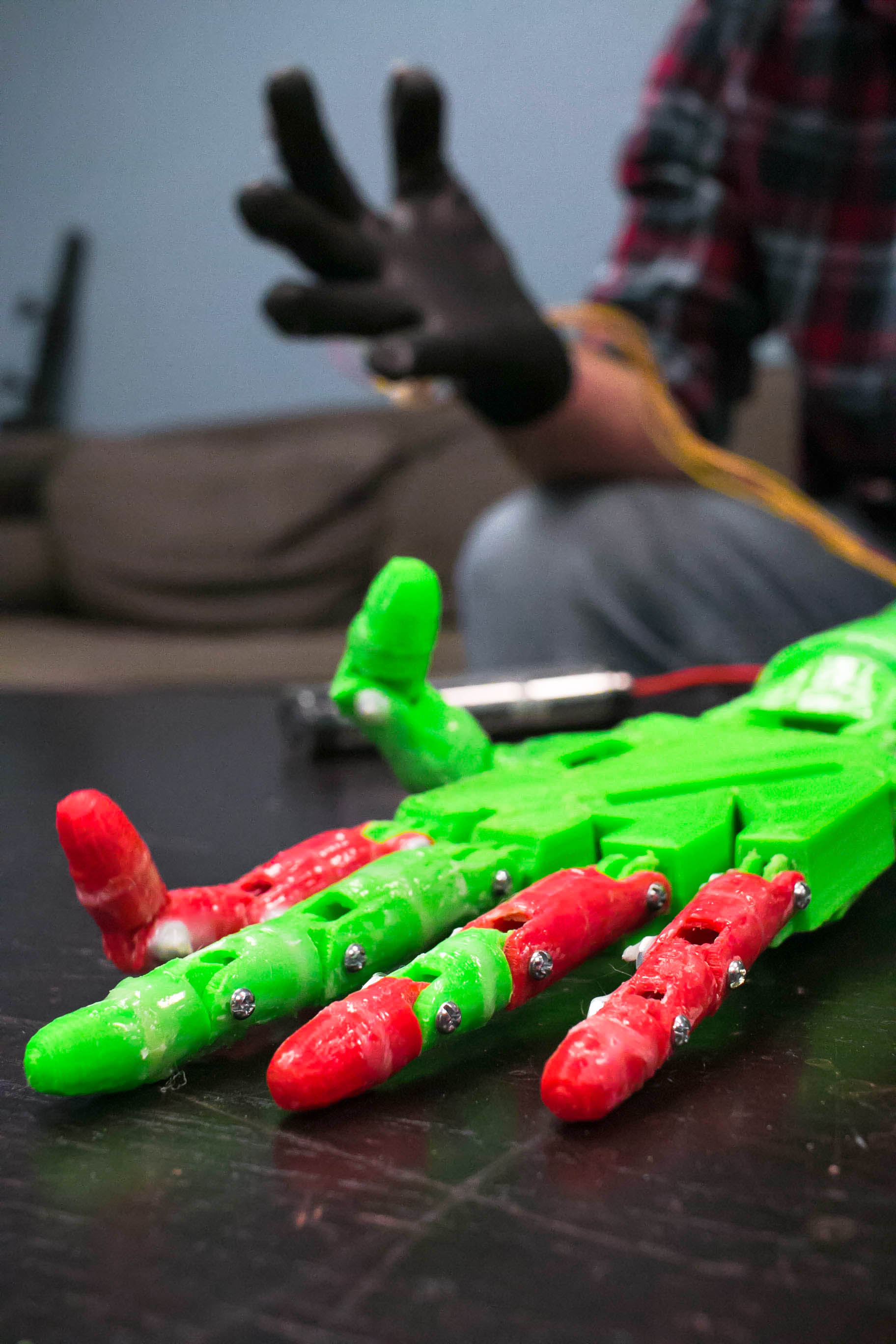Kennesaw State has nearly reached the end of its exciting inaugural football season, and the Owls have kept students on their toes. In addition to keeping their eyes on the players, a lack of safety nets behind the goal posts required students to watch out for rogue footballs.
Fifth Third Bank Stadium is a state-of-the-art athletics facility, and serves as the home of the Owls football team, as well as the soccer and lacrosse teams. Its wrap-around seating design offers spectators a bird’s-eye-view of what’s happening on the field, but also poses a dilemma.
The KSU student seating area is located in Sections 113-119 on the south end of the stadium, which lies directly behind the goal post. The Marching Owls are stationed in this section as well. Due to the fact that there is no safety net on the goal post in front of the student zone, balls from successful field goals or touchdowns fly straight into student seating.
The Sentinel reached out to Al Barba, Director of Athletics Communications at Kennesaw State University, for comment on the possible addition of safety nets.
“There are no plans at this time to put nets behind the goal posts. Normally, when there are nets behind the goal posts, they are there to keep balls from going into the stands,” Barba said. “Kennesaw State adheres to all safety regulations as it associates with spectator safety.”
He then stated that when a touchdown or field goal is being attempted, general student spectators and band members will already be concentrating on the situation, and will be able to respond accordingly should a ball come their way.
“Everybody’s kind of focused in on what’s going on, so they’re paying attention. If they see a ball coming towards them, they more than likely know to move one way, or they’ll try to catch it,” Barba said. “It’s pretty much their responsibility — the fans sitting in there — to be aware.”
Michael Moore, a senior, communication major and sports director at KSU OWL Radio, had a different take on the matter.
“When it comes to KSU, it kind of confused me that they didn’t have a net,” Moore said. “I’ve seen plenty of times where — on college football — where they even have enough netting to where, even if they miss — provided the fact that the field goal kicker isn’t that bad — that it’ll even catch the ones that miss every now and then.”
Emily Bateman, a junior, English major, agreed that safety nets would be beneficial, especially directly behind the goal post.
“Why you have nets, specifically in that area, is to protect people from where they are most likely to be hit by balls,” Bateman said. “Now, for those people who are sitting not behind the goalposts, on the side seating, or even diagonally from the goal posts, it would make sense that the responsibility or the burden would then be placed on the students or observers.”
Leah Register, a sophomore middle grades education major and member of the Marching Owls, voiced an additional concern about the potential damage to university marching band equipment.
“We’ve had several footballs hit the drums because they’re on the stands and can’t get out of the way,” Register said.
“I definitely think nets would be a great addition to the protection of the band equipment and members, especially when considering how much money the university has spent on uniforms and equipment.”
Not everyone agrees that a safety net is necessary, however.
“It’s a college tradition to catch the ball and throw it back on the field,” said Ian Evans, a junior majoring accounting. “Until there becomes a problem with students throwing the ball out of the stadium like at other colleges, there’s no need for one.”
The issue boils down to one question: where is the balance between student and stadium responsibility when it comes to spectator safety?



